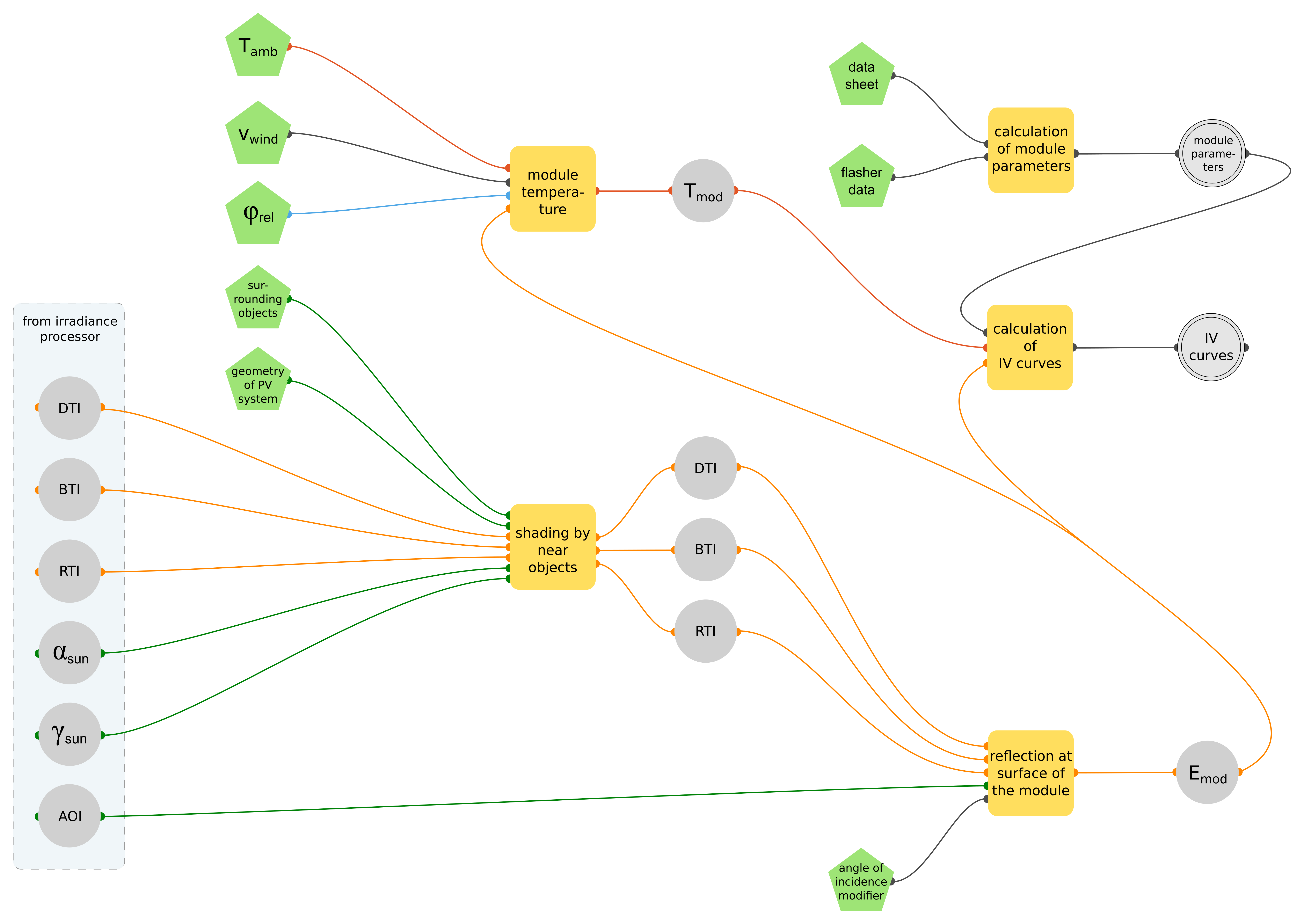PV modules
Modeling the PV generator is the second step in the simulation chain for photovoltaic systems. Finally, the electrical behavior of the PV module is simulated from the output data of the radiation modeling. The following sub-steps are necessary:
- Calculation of shading by near objects
- Reflection of radiation at the module surface
- Calculation of the module temperature
- Calculation of the current-voltage characteristic curve
Various characteristic models are used in PV*SOL to determine the characteristic curves. The calculation of the current-voltage characteristics takes place at each time step in the simulation for each module. In the next step, the characteristic curves of the modules are superimposed in series or in parallel, depending on the wiring, in order to determine the characteristic curve of the PV field.
Input parameters are shown in green, intermediate variables in gray and the models that take over the actual calculation in yellow. Blue stands for simple operations such as addition, subtraction or trigonometric calculations.
Input parameters
- Climate data:
- $T_\text{amb}$: Ambient temperature
- $v_\text{wind}$: Wind velocity
- $\phi_\text{rel}$: Relative humidity
- Geometrical information:
- Near objects
- Geometry of the PV system
- PV module data
- Datasheet specifications
- Possibly further data from flasher measurements
- IAM (incidence angle modifier), Reflection behaviour of the module
See also
